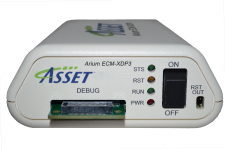Designers of microservers based on the new Intel® C2000 Atom™ system-on-a-chip (SoC) will be able to debug software and firmware faster because of the powerful tools in ASSET® InterTech’s Arium SourcePoint® debugger.
“The increased complexity of the C2000 Atom architecture can be challenging to software engineers who are trying to debug code and still meet critical deadlines on a development schedule,” said Larry Osborn, ASSET’s product manager for ScanWorks Arium tools. “Because the C2000 Atom brings datacenter-class capabilities to low-power storage and server applications, system providers will want to get their new microservers to market as quickly as possible. These tools will help.”
The new Intel C2000 Atom devices are low-power SoCs featuring two, four or eight processing cores as well as several peripheral interfaces, including USB2, Gigabit Ethernet and Serial Advanced Technology Attachment (SATA).
The SourcePoint debugger is able to quickly locate code bugs and provide extensive trace visibility into software and firmware execution. With the help of SourcePoint, engineers are able to efficiently identify and determine the root causes of performance issues, failures or crashes.
To serve the needs of a wide range of application development teams, the SourcePoint debugger executes on two Arium run-control probes, the LX-1000 and the ECM-XDP3. The LX-1000 Trace Port Analyzer is equipped with a large two-gigabyte storage resource so that the results of trace debugging processes can be captured and stored off chip. The LX-1000 is then able to graphically examine the stored trace data to help the engineer determine the precise location of the root cause of a bug. Arium’s ECM-XDP3 is a cost-effective yet powerful run-control probe that provides the same analytics, search functions and graphic capabilities as the LX-1000.


